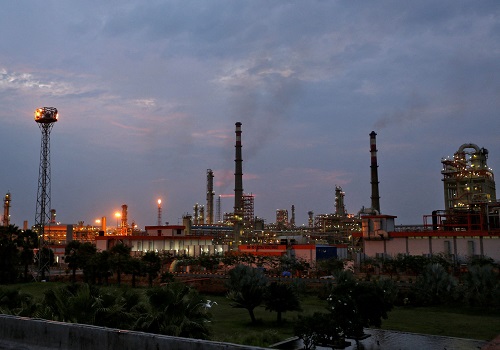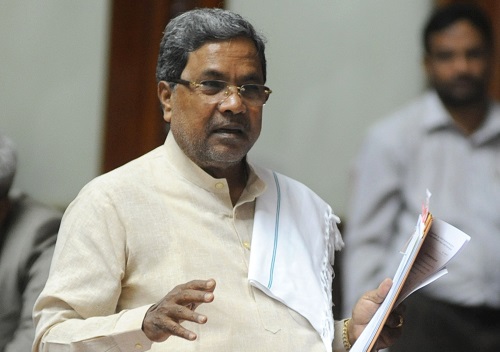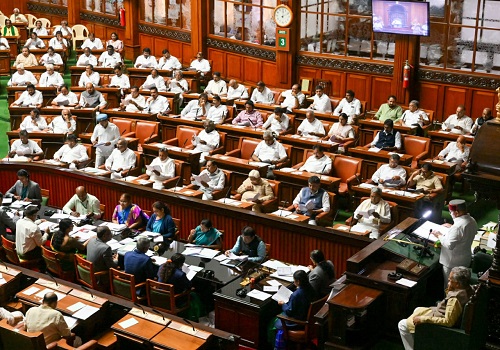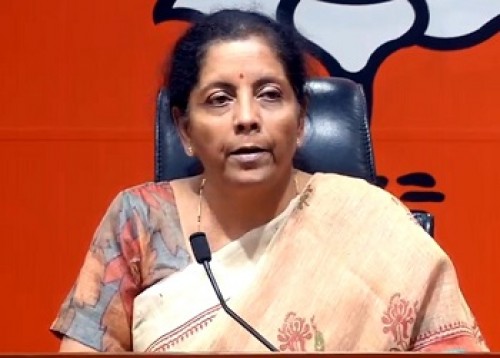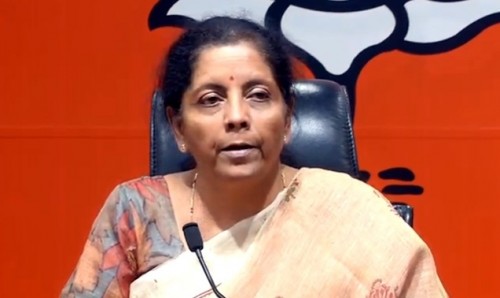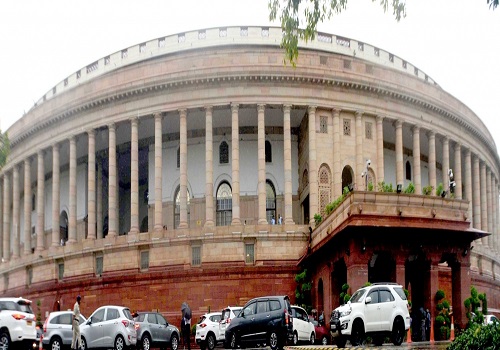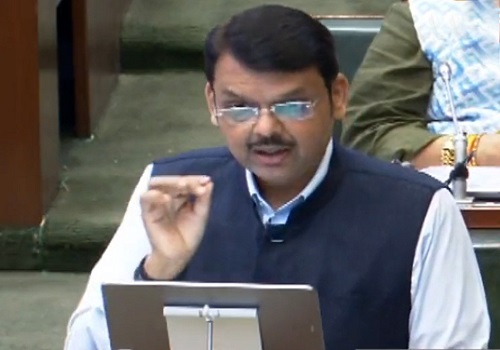Time to press the accelerator with higher infra spend, inviting global capital .
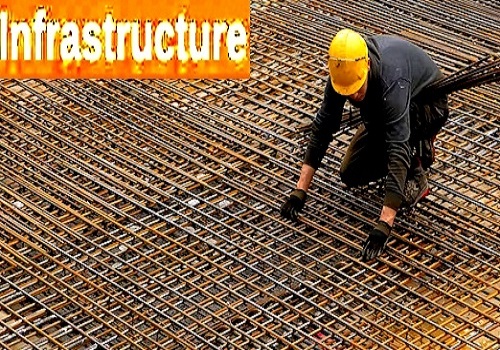
Follow us Now on Telegram ! Get daily 10 - 12 important updates on Business, Finance and Investment. Join our Telegram Channel
was a tough one for global markets. While in India the benchmark indices just about managed some gains and were up for the seventh year in a row, they were small at about 4.4 per cent.
In comparison, Dow Jones and Nasdaq lost quite a bit of ground. This also led to outflows from Indian markets to other markets.
It's a different equation that markets where the money went to, did not perform and one saw FII money flowing into India once again in the fourth quarter of 2022.
The Union Budget would be presented on February 1. Expectations run high and almost everyone has a wish list. Simply put, everyone wants income to go up and also desires that he pays less tax or contributes less to the growth and development of the economy and the country. Such things sound good only on paper.
The ground reality today is that tax buoyancy whether it be direct taxes or indirect taxes has picked up significantly. On the GST front, a monthly collection of Rs 1.5 lakh crore is the norm. This is the last full budget that the government would be presenting before general elections are held in 2024. It's a separate issue that when elections were held in 2019, the government did present a full budget as well.
The middle class expects that in this budget they would be rewarded with a rise in the basic exemption limit. Nothing has been done on this front over the last eight years. Incidentally this segment is also a big supporter and vote bank for the present government. There is expectation that the basic exemption limit of Rs 2.5 lakhs would be raised to Rs 5 lakhs.
This would take into account the inflation and higher cost of living. India does not as of date have income adjusted to inflation as a handful of countries have. In case something like this is done, it should also be in proportionate higher slabs so that the benefit flows across the spectrum.
The stock markets have been a big contributor to increase in personal taxation collections as the number of people who have entered the markets during Covid and post-Covid has more than doubled. Demat accounts which were around the four-crore mark in March 2020 have crossed the 10-crore mark in August 2022 and are currently around 10.8 crore as of December 2022.
There is a tendency for investments, trading or stock related activities to begin once the account is opened. This increase also led to strong SIP and domestic flows into the stock markets through mutual funds. The aggressive selling by FII was countered by domestic funds and this saw the markets not getting battered, unlike what used to happen earlier.
Stock markets want STT (securities transaction tax) to be reduced as the same was introduced in lieu of long-term capital gains tax. Now we have Long Term and STT and this is a double whammy. If savings through capital markets is to be strengthened, this rationalisation would go a long way in doing so.
Dividend, and the way it is taxed has been changed on and off. Since the 1992 reform budget of Manmohan Singh, the dividend and the way it is treated has been changed no less than 10 times. Currently it is taxed in the hands of the investor.
This amounts to double taxation, but the plea that it be removed falls on deaf years. With tax buoyancy, higher compliance, tax avoidance being plugged and faceless dispute resolution, probably this is the time to become progressive and make bold changes.
The PLI or production linked incentive scheme has done wonders and is progressing well. It has encouraged the ?Make in India' and China+1 approach of many businesses. To push and accelerate the same even further, there could be an approach to introduce some more sectors where the same is needed. In those sectors where it is already there, the allocation amount could be increased on a need basis.
Previously the government has announced PLI schemes outside the budget; it may choose to do so this time in the budget so that all such announcements get clubbed.
Licence Raj is an era gone by now. Many industries which are efficiently run are able to produce more than their installed capacity simply because they are efficient and they have kept on upgrading their production facilities.
Such companies should be encouraged and this would help in Atmanirbhar Bharat. A case in point is the fertiliser industry. They should be allowed to produce beyond 100 per cent based on demand.
The extension of sunrise industry lower tax rate could be extended by a couple of years considering the success but for the effect of covid hitting growth over two years. This would signal very strongly India's resolve to become a global manufacturing hub.
Our biggest import bill is on account of crude oil and edible oil. While the Russia-Ukraine war has brought turmoil to crude price volatility, there was a small silver lining to it as well.
With alternatives to fossil fuel becoming imperative on a war footing, except major announcements for the gas sector which could give a major impetus to city gas distribution for transport and domestic use. Further, hydrogen as a fuel would also be taken up in a bigger way with grants for the same being announced.
India's infrastructure has been developing rapidly and the multiplier effect of the same on the economy is there for all to see. I believe the railways will see major allocation this time to speed up tracks, dedicated freight corridors, better passenger amenities in the form of trains, railway stations and facilities in the train.
Expect the railways to use more of 'Make in India' initiatives for these measures. Large allocation to the railway ministry to move the pace of growth is expected.
The world is talking of recession hitting the largest economy in 2023. India is likely to remain unaffected from the same and continue to grow despite challenges. While currently our markets are expensive, in case recession hits other markets, and we grow, the flow will reverse into India for sure.
We have come out strongly post-Covid and have managed the issue well. To press on the pedal is the need of the hour. With a stable economy, it's time to press on and accelerate growth through infra spend and inviting global capital to manufacture here.
I strongly believe this budget would be used to channelise India's strength in being a low cost, dependable and reliable manufacturer of quality products. A viable alternative to the world's manufacturing factory of China with stable policies and dependable infrastructure. The changes that we are seeing in perception about the country would get amplified post budget 2023-2024.



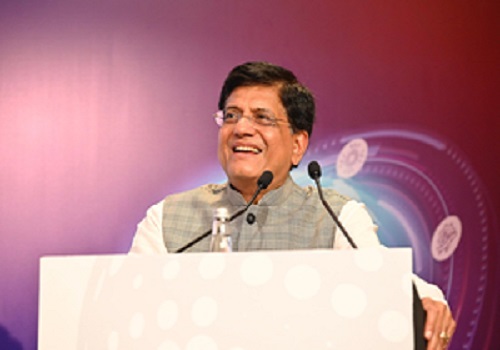

.jpg)








